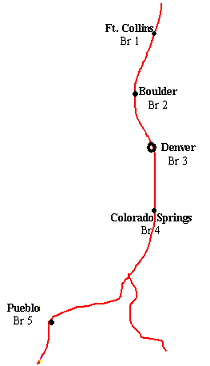
Procurement groups define how products are replenished to the branches and identify emergency procurement sources. You can assign procurement groups at the buy line level or the product level. The system checks for a procurement group assigned at the product level first to determine the replenishment path to use. The procurement group assigned at the buy line level determines branch replenishment path if no procurement group is assigned at the product level. If a procurement group is assigned at the product level it overrides the group at the buy line level. If no procurement group is defined at either level, the system uses the default procurement group assigned during installation.
To procure individual products, see Procuring Individual Products in Sales Management.
Procurement groups are used for procuring an item that is out of stock at the sales branch. Procurement groups do not affect the creation of a Suggested P/O Queue, but determine how stock is moved from one branch to another within the company.
Single-branch companies do not need procurement groups. They replenish stock as needed from vendors.
Multi-branch companies can buy and warehouse products for all their branches. Therefore, the parent branch replenishes stock levels based on demand from its own purchasing history and demand from the child branches. The parent branch can handle this replenishment through drop-ship service to the child branch from the vendor or by identifying transfer paths between branches for emergency procurement.
Consider the following branch set up for a company:

Branch 3 in Denver is the parent branch. For large items and with high carrying costs, you can set up one procurement group reflecting a central warehousing scheme. Branch 3 would warehouse these items until the other branches PIL dropped below order point, and then set up a transfer.
In addition, for items that have low or no carrying costs and are sold frequently, you can set up a procurement group reflecting a distributive warehousing scheme. Each branch would receive items to replenish their stock according to their demand and PIL.
Finally, larger items with higher carrying costs that are needed at each branch and yet costly to ship, you can set up a procurement group reflecting a central distribution warehousing scheme. Branch 3 would receive all the product in this category. Branch 3 would ship products for both branches 1 and 2 to branch 2 and products for branches 4 and 5 to branch 4. From there, branch 2 would ship to branch 1 and branch 4 would ship to branch 5. This lowers the shipping costs.
This section provides information about the following: